When you look at the Brescia horizon, spotting the big castle on top of Cidneo Hill is easy. Known as the Falcon of Italy, the Castle of Brescia is one of the largest and best-preserved fortresses of Northern Italy. It was the first place Fotostrasse visited in Brescia during our days at Blogville Lombardy.
I remember the first thing I saw when we arrived in Brescia: this castle overlooking the city. Our plan was to visit the place and take pictures of everything, and this is what we did.
Even if you don’t mind history when you’re traveling, the Castle of Brescia might be interesting for you just because of the view overlooking the city, as you’ll see in the pictures below.
But first, let me explain some of the history here.
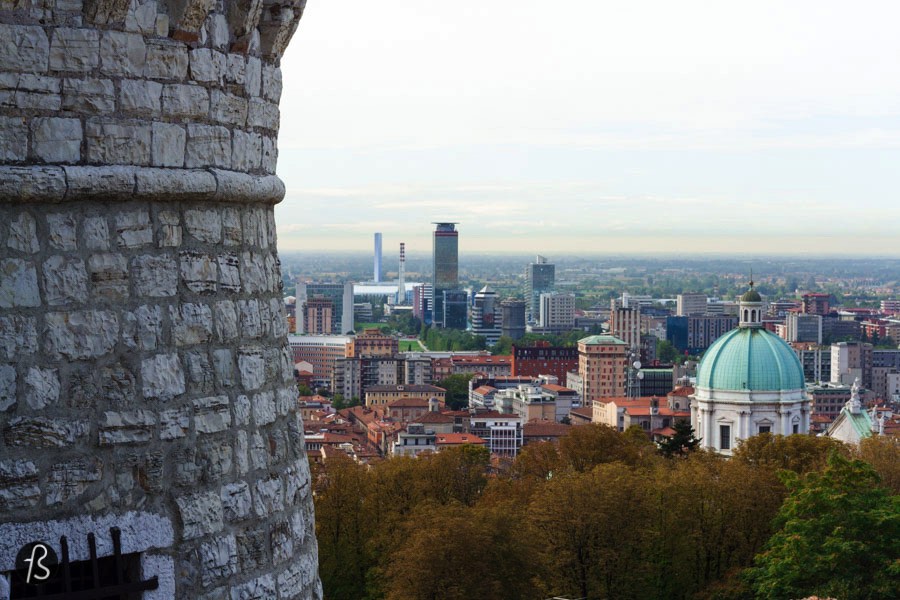

A little bit of history from the Castle of Brescia
Originally, the Cidneo Hill was the site of a Roman temple that later became a Christian church. Today, you can see some of its remains on the tower known as Mirabella but don’t expect to go there and visit Roman ruins.
Because of the view and the geography of the hill, a fort first appeared there during the Middle Ages. A few years ago, the powerful Visconti Family began expanding the fort by creating a circular fortress that could cover everything in the valley below. This fortress was known as Mastio Visconteo.
During the 16th century, when Brescia was part of the Venetian Republic, its massive bastions and monumental gateway were added. On the drawbridge and the moat, you can still see the Venetian Lion carved in stone above the main gate that stood over the city for four centuries.
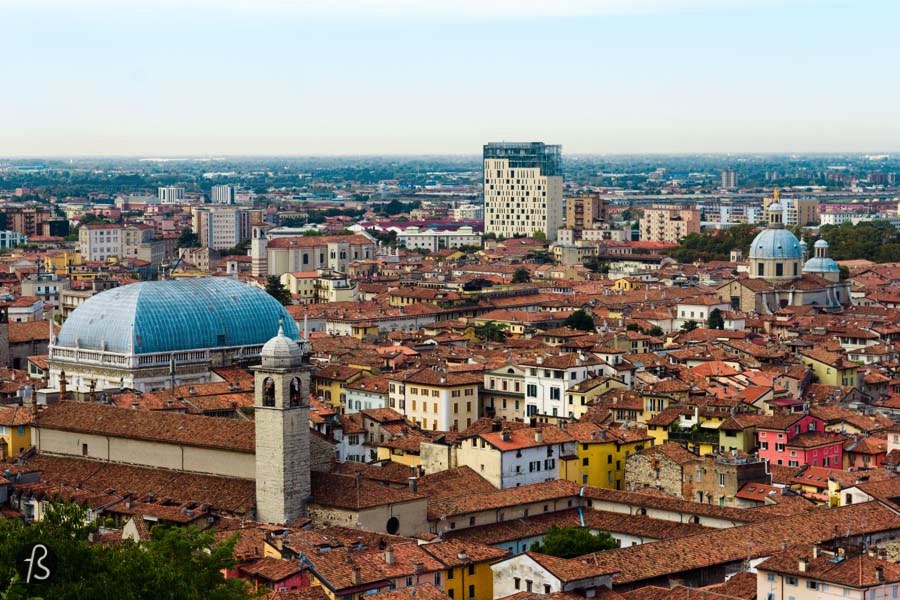
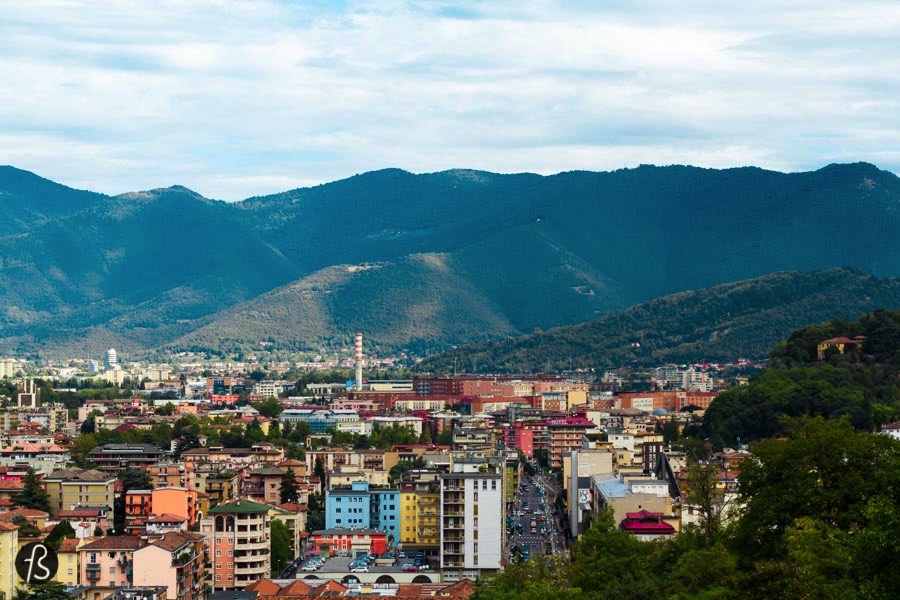
Based on its strategic position, the Castle of Brescia can be expected to have witnessed many sieges between rival Italian Noble Families and the invading French troops. I don’t know much about the battles this castle survived, but I know the last fight was against Austrian forces.
This previous battle occurred during the Risorgimento, and the Castle saw Brescia’s brave citizens getting their place in history by fighting the Austrian army that took the Castle by force.
The locals lost, but the battle was immortalised as the Leonessa d’Italia by the poet Aleardo Aleardi and, a few years later, by Noble Prize winner Giosuè Carducci. Because of this battle, known as the Ten Days of Brescia, the castle is now home to the Luigi Marzoli Arms Museum, which has one of the richest collections of weaponry in Europe.
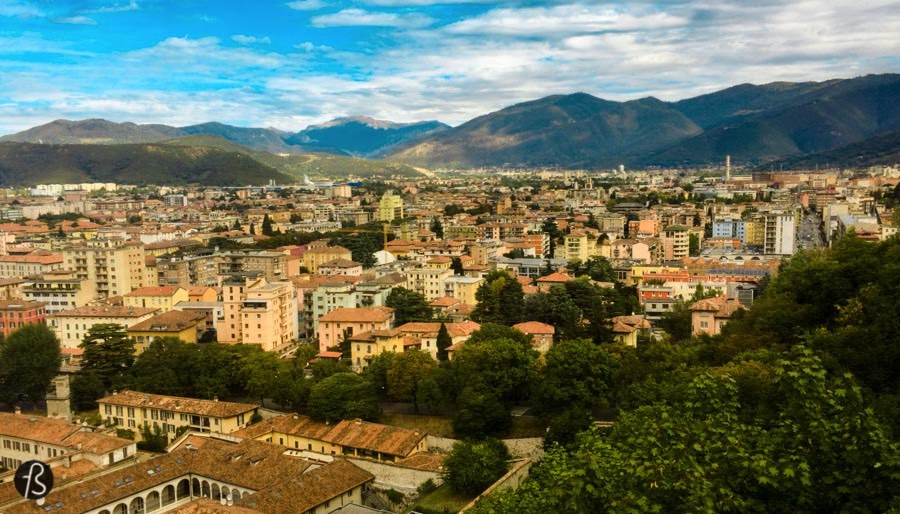
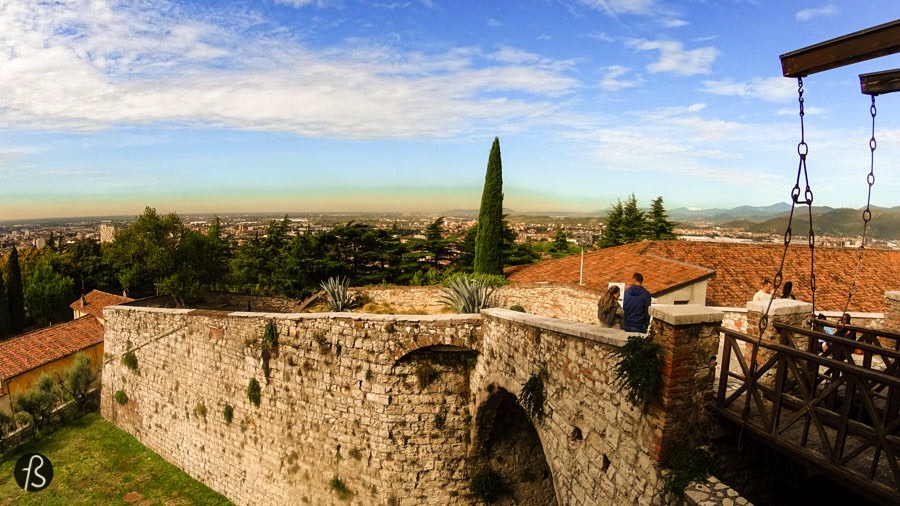
Now that you know the history of the Castle of Brescia, we can start talking about it.
As you can imagine, the Castle of Brescia got its nickname Falcon of Italy from its position at the hill’s summit, overlooking the city from above. With its more than 75.000 square meters, you can see the evolution of military techniques that made this castle almost impregnable. A perfect instrument to control Brescia for centuries.
To enter the castle, you have to go through the gateway. Situated in the middle of a curtain wall that connects the bastions of San Marco and San Faustino, it dates back to the end of the 16th century when the Venetian Republic was turning it into a proper fortress.
On your right side, you can see San Marco’s bastion. This bastion is the only one featuring a traditional shape, with openings on the base from which defenders could fire on attackers. On the left side, San Faustino stands with its medieval brickwork and stone structure.
Further east, you can see San Pietro’s bastion as well.
As you cross the gateway, you will be traveling through history, with buildings dating from Venetian domination, others from Austrian occupation, and then back to medieval times as you get to the innermost walls. There, you will see the Drawbridge that leads to the Prisoner’s Tower.
This tower dates back to the first half of the 14th century and is the gateway to the topmost area of the hill. You can easily recognize the Prisoner’s Tower by looking at the lack of openings or gun ports for defense. This architectural detail points to the Visconti period from 1337 to 14033.
The gateway also leads to Visconti Mastio, which houses the Luigi Marzoli Arms today. Despite its numerous alterations, this is the only major remaining part of the fortress’s original layout. It was one of the buildings erected on the foundations of a Roman temple, whose steps can be seen inside the building. They were found after recent restoration work.
As I said before, the Luigi Marzoli Arms Museum is one of the richest collections of weaponry in Europe, with more than 6,000 pieces arranged by time period. There, you can see a wide variety of armor, weapons, and firearms that were donated to the city in 1965 by Luigi Mazola.
If you like military history, this museum was made for you.
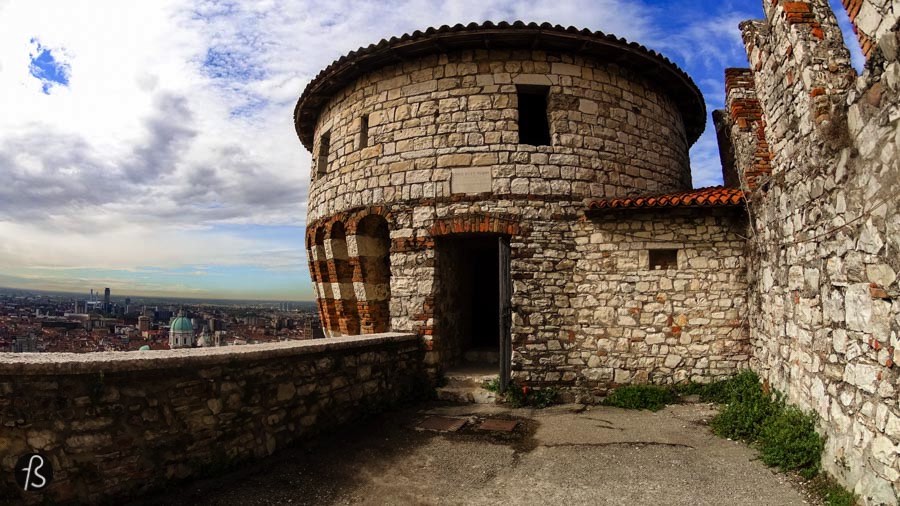
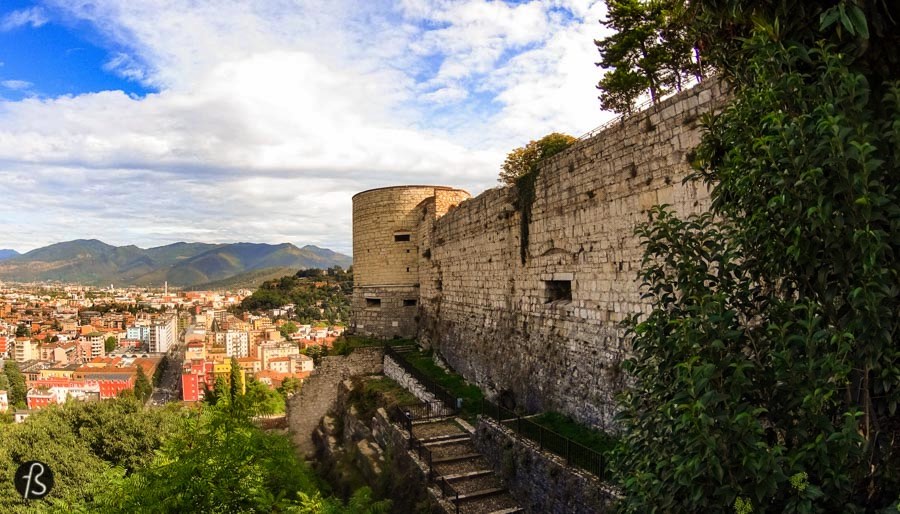
On the northern side of the Castle of Brescia is Coltrina Tower. Named after its builder, Jacopo Coltrino, it is cylindrical and connected to the castle by a barrel-vaulted gallery featuring ventilation openings.
Also, on the castle’s northern side, you will find the Strada del Soccorso, a flight of stairs connecting the hillside beneath the castle via a fortified gateway. This relief route played an important strategic role in the lives of Gaston de Foix’s troops in 1512, and it was used again when Brescia decided to fight against Austrian occupation.
When you leave the Castle of Brescia and walk back to the city, don’t forget to pay attention to the amazing architecture of the house, the great view of Brescia, and the street itself.
At Contrada Sant’Urbano, you will find the Memorial to the Victims of Terrorism and Political Violence in Italy, filled with the names of those who died in the country in the 1970s and 1980s.
You can reach the castle from the train station in Brescia on foot in less than twenty minutes. It is pretty easy, and the view is great.
The Castle of Brescia can be visited daily from 08:00 in the morning to 20:00 in the evening.
You don’t pay anything to visit the Castle, but you have to pay €4 to visit the Luigi Marzoli Arms Museum and Risorgimento Museum. More information can be found here.
Castle of Brescia: Our Blogville Lombardy Highlight
Castle of Brescia and Luigi Marzoli Arms Museum and Risorgimento Museum
Via Del Castello, 9, 25122 Brescia
Lombardy, Italy
I visited the Castle of Brescia during our days at Blogville Lombardy, and it was an amazing experience. Special thanks to Brescia Tourism!